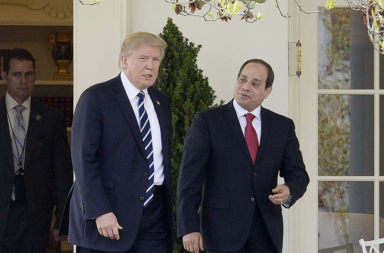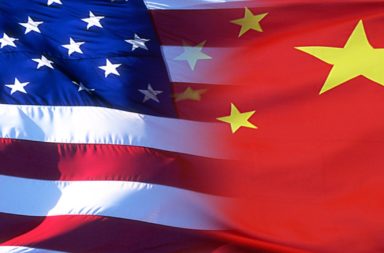For weeks posters had been strewn across Berlin in preparation for the STOP TTIP CETA demonstration in Germany’s capital. The posters though, offered little information on the event or the subject, forcing observers to investigate the definitions of these terms themselves. Maybe an intention by the organizers, as a way of simulating the uncovering of the most classified and controversial trade deals of the decade: the Transatlantic Trade and Investment Partnership, and the Comprehensive Economic and Trade Agreement.
Some have called them the Trojan treaties, the deals that, for a few years, have been silently passing under the noses of most major news outlets in the mainstream media. Until recently, the only real information of their existence has been gained from leaked documents. TTIP is a proposed trade agreement between the EU and the US, aimed at establishing a free trade area in the North Atlantic.
Last week marked the International Days of Action to stop TTIP and CETA, and on the 10th October, the areas surrounding the Reichstag and Hauptbahnhof were congested with over 250,000 demonstrators, as the official Berlin event took place. Parallel with Berlin, demonstrations and events of similar sizes were happening in other major European capitals. These mass demonstrations though, only mark the periphery of the amplifying global movement against these trade deals which has been snowballing for over two years now, with an online petition against the deals acquiring over 3.3 million signatures within a year. The European continent really is taking a stand, but why? What do the opponents believe are the potential ramifications of these deals?
According to the European Commission, by 2027, the deal would permanently increase the size of the EU economy by 120 billion euros, and the US economy by 95 billion euros, and further every subsequent year. These figures dwarf any previous free trade deals, making it the largest deal in history. It would reconcile regulations in many industries, including in metal products, processed foods, chemicals, and motor vehicles. Alongside TTIP is CETA, similar but only concerned with Canada, aiming to make business with the EU easier.
However, War On Want, a major political organisation with campaigns against the root causes of poverty and human rights violations, have stated that TTIP will ‘lift trade ‘barriers’ between the US and Europe’. These barriers, they say, are some of our most prized social standards and environmental regulations. Banking regulations for example, those that were put in place in the US after the 2008 financial crisis, are feared to be removed. In addition, ‘regulatory convergence’ will aim to bring the EU and the US food standards and environmental regulations much closer together, leaving Europe open to laxer restrictions on genetically modified ingredients, and dangerous substances.
Most of all, TTIP further ‘seeks to create new markets by opening up public services’, and will allow’ foreign investors a new right to sue sovereign governments’ for loss of profits from public policy decisions. This final new mechanism, the Investor-State Dispute Settlements, will likely elevate corporations to a status equivalent to the nation state. According to the Independent, ‘Nothing could be more cynically anti-democratic.’
It would be very easy to stand on either side of the fence when discussing TTIP. The European Commission are adamant on their proposals, and their calculations are clear in that developing common regulatory standards will drive further economic growth for both the US and the EU. A deal of this size could produce enormous pay offs for decades, with substantial growth in certain industries. Further, many spokespeople and advocates are claiming that a successful TTIP deal would pull Europe out of the depths of the financial struggle, essentially saving it and planting it back on the world stage. To political leaders it is a global statement, with huge long-term geostrategic benefits for both the US and the EU.
On the other hand, as the negotiations are still taking place under such secrecy, any speculations over the benefits are just that, speculations. The people of the US and the EU have a strong claim, and a right to be afraid. The deal has taken years to finalize, without any input from those it will most affect. Unnerving to anyone is the way in which the negotiations for the deals have been conducted. Since their inception, the deals have almost successfully been swept and kept under the carpet, away from the public gaze. This much is very clear. Some have called it the conspiracy of silence, with the majority of talks being held in secret, and the text of the deal itself rumoured of being kept in a classified reading room in Brussels. The European Commission has ridiculed these claims of secrecy, forcing them to publish legal documents where they have not done so before, to appear more transparent.
The need to be critical and balanced over a topic as large as this is a must, and some institutions have taken it upon themselves to present an opposing set of results. One study, published in October 2014 by Tufts University, titled ‘The Trans-Atlantic Trade and Investment Partnership: European Disintegration, Unemployment and Instability’ presents the statistical challenge to the European Commission over their positive projections of the deal. The paper offers an assessment based on different economic models, claiming that the one that has been used is both not enough, and is unsuitable for such a task. Using the United Nations Global Policy Model, they simulated the impact of TTIP in a more realistic context of austerity, high unemployment and low growth. The results were drastically different from existing assessments.
TTIP according to the paper, would lead to losses in terms of net exports after a decade, with Germany at a loss of 1.14% and the UK at a loss of 0.95%. It would lead to net losses in terms of GDP, consistent with figures for net exports. In addition, there would be a loss of labour income, and job losses of up to 600,000 in the EU. The list continues to point toward very bleak prospects for the EU and the US.
Most of all though, this study by Tufts University presents an alternative set of results for the same data, highlighting the need for much further and more realistic analysis before taking further steps with negotiations. This deal, no matter how high the rewards could be with its current model of assessment, should be taken out of the dark and held up with transparency by its architects, firstly to criticism by more academic institutions, and secondly, to the millions of people rightfully concerned.




